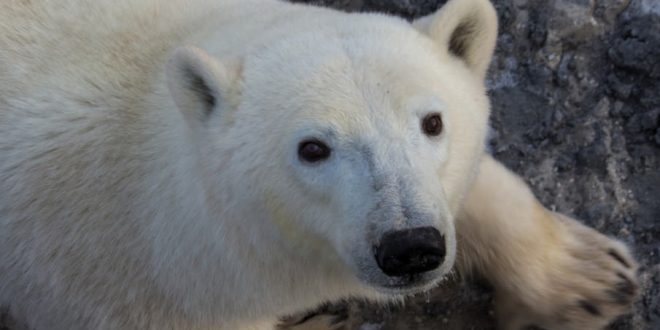As the Arctic warms faster than any other place on the planet and sea ice declines, there is only one sure way to save polar bears from extinction, the US government announced: decisive action on climate change.
In a final conservation management plan, the U.S. Fish and Wildlife Service singles out climate change-driven sea ice loss as the “primary threat” to the future of this beloved species.
“It cannot be overstated that the single most important action for the recovery of polar bears is to significantly reduce the present levels of global greenhouse gas emissions, which are the primary source of warming in the Arctic,” federal officials wrote in the lengthy report.
“Short of action that effectively addresses the primary cause of diminishing sea ice, it is unlikely that polar bears will be recovered,” they added.
In 2008, polar bears became the first animal listed under the Endangered Species Act because of forecasted impacts of climate change. The species relies on sea ice for hunting, resting and raising their young.
Although the recovery plan repeatedly stresses the urgency of tackling climate change, the Fish and Wildlife Service does not have the authority to regulate greenhouse gas emissions. Therefore, the plan focuses on other ways to give the species a better fighting chance, including reducing human-bear interactions and overhunting, protecting denning habitat and minimizing the risk of oil spills.
“Climate change must be addressed by the global community,” Andrea Medeiros, a FWS spokeswoman, said in an email to The Huffington Post. “The Paris Agreement is a step in that direction. In the mean time, this plan is a guide to actions that can be taken to help polar bears through the other challenges they will face as a result of the rapid loss of Arctic sea ice.”
But without actually requiring the necessary reduction in carbon emissions, some critics say the plan does little to ensure a future for the species. Shaye Wolf, climate science director at the Center for Biological Diversity, called it “toothless.”
“This recovery plan is just too risky for the polar bear,” she said in a statement. “Recovery plans work, but only if they truly address the threats to species. Sadly that simply isn’t the case with this polar bear plan.”
As part of last year’s historic Paris climate agreement, nearly 200 countries pledged to reduce carbon emissions in an effort to keep global temperatures from reaching 2 degrees Celsius above what they were in pre-industrial times. In its report, FWS acknowledges that polar bears “will likely be extirpated from much of their present-day range if emissions continue to rise at current rates.” However, if the global temperature rise can be kept below the 2-degree Celsius benchmark, “it is far more likely that polar bears Arctic-wide can be fully recovered.”
Of course, President-elect Donald Trump has dismissed climate change as “bullshit” and a Chinese “hoax,” and vowed to cut all federal spending related to the issue. He has also promised to pull the U.S. out of the Paris climate agreement ― a move that could ultimately seal the polar bear’s fate.
Today, there are an estimated 26,000 polar bears worldwide. But as the planet warms and the amount of Arctic sea ice continues to dwindle, scientists expect the population to take a significant hit.
Elisabeth Kruger, a polar bear expert and Arctic program officer at the World Wildlife Fund, said that by quickly implementing the federal recovery plan, scientists can make sure the animals are more resilient to our changing climate.
“If our grandchildren are to live in a world with a healthy population of wild polar bears, we need to take responsibility to limit further increases in climate change and care for our planet,” she said in a statement. “We have no other option than to accelerate the transition to a climate-smart future.”
Agencies/Canadajournal
 Canada Journal – News of the World Articles and videos to bring you the biggest Canadian news stories from across the country every day
Canada Journal – News of the World Articles and videos to bring you the biggest Canadian news stories from across the country every day



